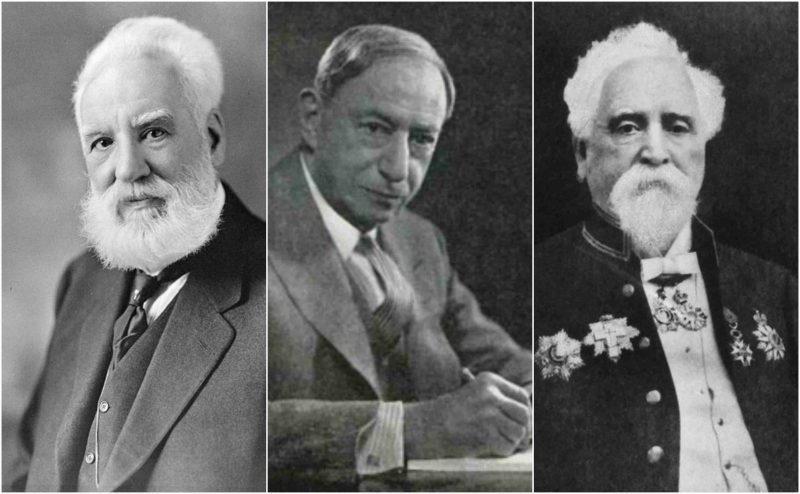Many inventors are famous for one or two of their more revolutionary inventions. The truth is that over careers that spans multiple decades, inventors will design and develop many different creations. Some of these inventions were useful, while others were not. All showcased innovative thinking. That, however, did not prevent the history books from forgetting them. The following list are some of these forgotten creations by inventors whose names are familiar to most of us.
Hiram Maxim
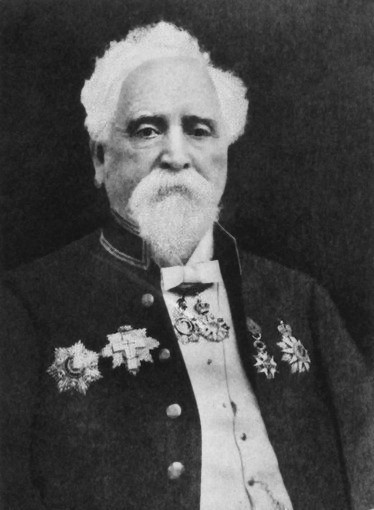
The first invention was created by Hiram Maxim, who was one of the 19th century’s most prolific men. His most prominent achievement came in 1883 when he invented the Maxim gun. While there were similar weapons such as the hand-cranked Gatling Gun that predated it, the Maxim gun was the first fully automatic machine gun. It was recoil-operated, portable, and water-cooled. On top of that, it could fire 600 rounds per minute with just a press of the trigger. Needless to say, this weapon saw a lot of action during World War I. It was the Maxim gun that would serve as the base of the later Vickers gun, the machine gun that the British Army used for decades.The gun is obviously not the invention to make it on this list. After the success of his gun, Maxim turned to aeronautics. In order to fund his research into this area and to boost public interest in flying, the inventor designed an amusement ride for the Earl’s Court Exhibition of 1904. It was a swing ride that used rocket-shaped cars instead of chairs. It was called Sir Hiram Maxim Captive Flying Machines, and people loved it.Originally, Maxim had planned to add rudders and airfoils that allowed riders to control their cars. Due to safety concerns and regulations, however, he wasn’t allowed to do so. This didn’t go over very well with Maxim, who then dismissed his invention as a “glorified merry-go-round.” Despite this, people still flocked to take a ride on the flying machines. As time went on, other resorts and fairgrounds built more of Maxim’s rides. One such ride, located at Blackpool Pleasure Beach, is still in working condition, which makes it the oldest operational ride in Europe.
Hugo Gernsback
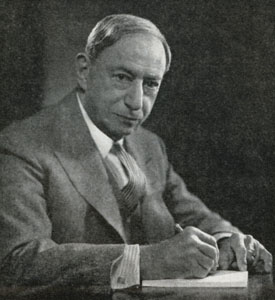
If you are a fan of science-fiction literature, chances are that you will recognize the name Hugo Gernsback. He is considered the father of science fiction and even has an award (the Hugo Award) for best in science-fiction or fantasy named after him. Like many other authors, Gernsback started his prolific career as a magazine publisher and editor – a job that he excelled at. He was one of many who helped launch the first science fiction magazine in history, called Amazing Stories. The first volume was published in 1926. Again, like many other writers, Gernsback’s reputation wasn’t so pristine during his lifetime. His stories weren’t well received and he was infamous in publishing circles for trying multiple times to avoid paying his writers. This even earned him the moniker “Hugo the Rat” from another well-known writer H.P. Lovecraft.Aside from writing, Gernsback fancied himself a bit of an inventor. He held dozens of patents throughout his life and clearly had a strong vision for the future – he predicted wireless technology, television, and even air conditioning. Yet, his own inventions were a bit mediocre. For example, he designed “The Isolator”, a helmet that would allow its wearer to work in complete tranquility, regardless of the environment. It was advertised as being completely soundproof and airtight, which required it to have its own air supply. This creation was first showcased in the 1925 issue of Science and Invention – a magazine that focused primarily on recent scientific developments. Gernsback modeled his invention for the photograph in the magazine, but the helmet was never put into production.
John Logie Baird
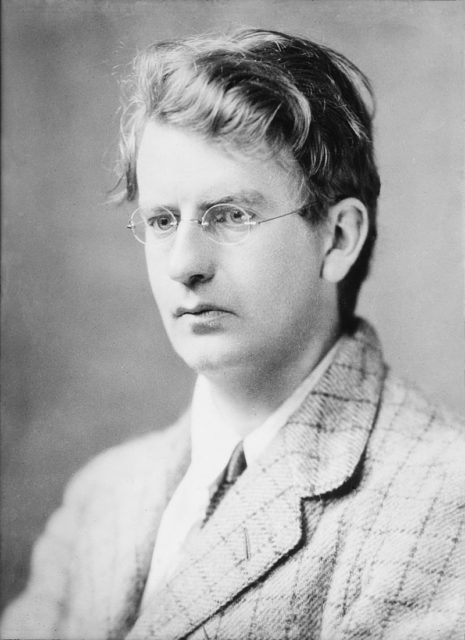
John Logie Baird is often considered the inventor of television because he built and demonstrated the first working mechanical television system in 1926. Most of his later career was spent making improvements for the television, but his earlier work was much more varied. He designed a razor that was made out of glass and pneumatic shoes for people with flat feet, for example. Neither of these inventions took off, but Baird would eventually find success when he designed a new type of sock. This sock came into being after Baird attempted to enlist for World War I in 1915. When he was declared unfit for duty, he worked for a munitions factory. It was during his time at the factory that he learned of trench foot, a common problem for soldiers who had to wear wet socks for long periods of time. If this was left untreated, the soldier’s foot would develop an infection that in turn could lead to requiring an amputation.Baird designed the Baird Undersock to prevent such infections. These were essentially another pair of socks – or, as it was called back then, gentlemen’s half-hose – that was worn under the regular pair to soak up moisture. It was also coated with borax, which acted as an antiseptic. The Baird Undersock was so successful that it allowed Baird to quit his job and start selling it full-time. The advertising campaign included testimonials from soldiers. Women were hired to walk throughout cities with sandwich boards promoting the product.
Eugene Rimmel
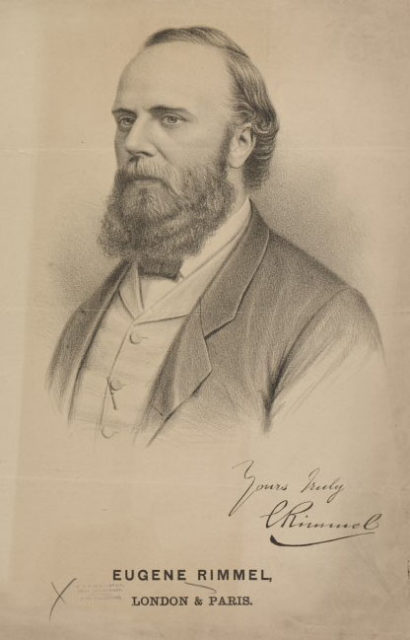
Even 150 years after his death, Eugene Rimmel is one of the biggest names in cosmetics. This pioneer changed the makeup industry with all the new products he developed, such as the nontoxic mascara – mascara that is still known today as “rimmel” in many countries. Founded in 1834, his cosmetics brand is still going strong in dozens of nations all over the world. Rimmel wasn’t just concerned with making people look pretty; he also strived to improve human hygiene. If people took more baths, they would use more of his products. So, in essence, it was still a marketing ploy, but one that had major benefits. One of the first products Rimmel created was his toilet vinegar. This liquid was a mixture of oils, white vinegar, lavender extract, and tincture of benzoin infused for ten days and then filtered. It had originally been intended as a moisturizer or a shampoo. People soon realized, however, that the mixture was effective for removing stubborn stains from the toilet. Although his product was being used for something other than what he intended, Rimmel didn’t have a problem with re-branding his product. The ads claimed that this was a “tonic and refreshing adjunct to the toilet or bath,” boasting disinfectant and sanitary properties outmatching those of any other Eau du Cologne.
Francesco Sforza
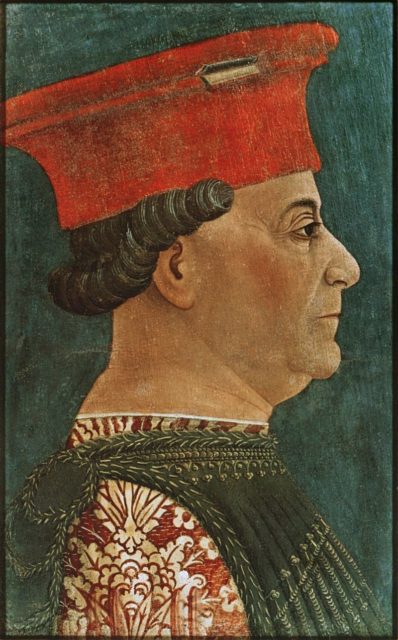
Way back in 1482, the Duke of Milan, Francesco Sforza commissioned Leonardo da Vinci to build an equestrian statue. What da Vinci produced eventually became known as the Gran Cavallo. At 7.3 meters (24 feet) and 80 tons, this bronze giant that would have been the largest equestrian statue in the world. Pleased with da Vinci’s plan, the Duke gathered the bronze for the statue. As with many of Leonardo’s projects, however, this particular one required a lot of work and preparation. Horse statues weren’t anything new, but of course, Leonardo wanted to cast the entire 80-ton horse out of one solid piece of bronze. That had never been done before and was considered impossible. In order to accomplish such a statue, he had to devise a completely new casting method.Sadly, the master artist would never live to see his vision come to life. The clay model of the statue had been completed in 1492, but Milan had gone to war with France and the duke had to use the bronze promised to Leonardo to make cannons. For seven years, Leonardo’s project was put on hold. Then when France conquered Milan in 1499, French soldiers stormed the castle and promptly destroyed the clay model. The statue was finally erected a few decades ago by an American named Charles Dent.
John Napier
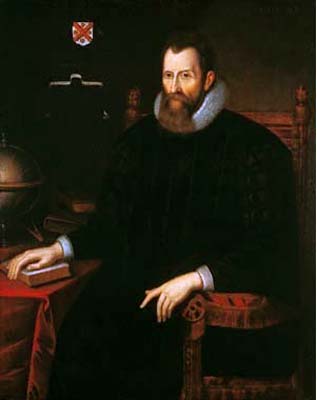
Scottish polymath John Napier is known primarily for his contributions to mathematics. He invented logarithms and popularized the use of the decimal point. Furthermore, he studied astronomy and physics. The regular fields didn’t contain his interest, however; Napier occasionally dabbled in the occult.The reason that he is on this list is due to the calculation he invented. Called Napier’s Bones, it served as a precursor and inspiration for the first mechanical calculators. The Bones consisted of a set of numbered rods that were mounted on a plate. There were standard bones that could solve multiplication and division through simple additions and subtractions. However, the Bones could solve square and cube roots. Napier based the Bones on a lattice multiplication method that was first used by Arab and Indian mathematicians.Decades after the creation of Napier’s Bones, the first true mechanical calculator was built by either Blaise Pascal or Wilhelm Schikard depending on which history book you believe. Regardless, Napier’s Bones remained a practical tool that is still used hundreds of years later. It has only received minor changes to the design. Derivatives such as the Genaille-Lucas ruler from 1891 were spawned by Napier’s Bones. The most important descendant was the slide rule, however. It was built in 1621 by William Oughtred and was based on the Napier’s Bones design. It was used centuries later by NASA during the Apollo Program.
Christopher Columbus
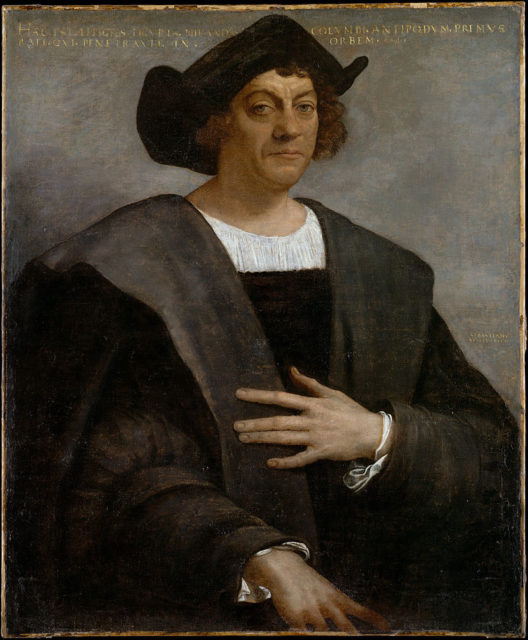
There is a folktale that claims Christopher Columbus once challenged his critics to stand an egg on its tip. When they failed to do so, he took an egg and tapped it against the table beforehand. This flattened the tip, and he was able to stand the egg up. The point of the challenge was to show his critics that something they proclaimed was impossible actually had a very simple solution. The story is used today to illustrate the benefits of creativity and thinking outside the box. 100 years ago, however, the inventor Nikola Tesla took the story a bit more literally. The year was 1893 and the Chicago World’s Fair, also called the World Columbian Exposition to mark the 400th anniversary of Columbus’s famous voyage, was well underway. Tesla wanted to use the World’s Fair to show off his alternating current induction motor. For his demonstrations, Tesla built his own Egg of Columbus device. This device was an iron core stator with several coils wound around it. It was capable of not only standing a copper egg on its tip, but also spinning the egg on its major axis due to its gyroscopic action.Not only was this a fitting exhibit or the Columbus World’s Fair, but Tesla’s demonstration perfectly illustrated the principles behind the rotating magnetic field, the core element of the alternating current motor. Unfortunately for Tesla’s fans today, the original device was lost. Several replicas were built and can be found in museums.
Harold Edgerton
Harold Edgerton invented the electronic flash, revolutionized photography, and thus earned himself the name “Papa Flash”. He was able to capture never-before-seen images by using a stroboscope. His most famous shot that he produced was that of a bullet piercing a playing card. This technology was developed by him in the 1930s, but it took a while before the public caught on. In the meantime, Edgerton looked for new areas where his technology might be used; sonar and deep-sea photography benefited highly from his contributions. In 1972, a friend and fellow inventor, Robert Rines, sent Edgerton a telegram asking for help in finding the Loch Ness Monster. Rines believed that his friend could invent new equipment that was capable of penetrating the loch’s murky water. Edgerton wasn’t necessarily a believer in the Loch Ness Monster, but he savored the challenge of photographing an animal under such conditions. For the next few years, he designed and tested new equipment. In 1987, he sent Rines a letter that talked about building a new “streak camera” that was capable of detecting moving objects.Although they never found Nessie, but their time and effort wasn’t wasted. Much of the new technology that Edgerton invented was incorporated into regular cameras. They did find a World War II Wellington bomber, as well as mysterious stone circles at the bottom of the lake, which were later determined to just be normal rocks that had fallen off construction boats.
Thomas Edison
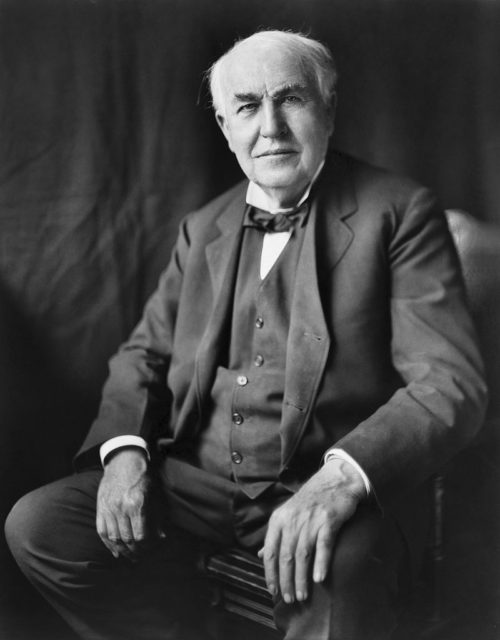
Most, if not all of us, know who Thomas Edison was. He was one of the most prolific inventors ever and held over 1,000 patents. One of his least known inventions was the electric pen, which was also one of his early successes. He was only 28 years old when he was researching ways of improving the telegraph. He had noticed that the stylus of the printing telegraph left a mark beneath the paper as it punctured it. Edison and his colleague Charles Batchelor devised a duplicating machine that used perforated paper as a stencil and made copies from it.The main component of this setup was the electric pen, but it also included a wet-cell battery, an ink roller, a holder, stand, and duplicating press. The latter three on the list were completely made of cast iron. The entire contraption resembled a sewing machine, and the pen didn’t actually write, but rather punched thousands of tiny holes in perforated paper to create a stencil. This paper stencil would be then placed in the duplicator, and the ink roller was used to make as many copies as desired. Apparently, the machine could perform fifteen copies per minute. A single stencil could produce a total of 15,000 copies.Edison’s electric pen became the first commercial appliance with an electric motor and was also the first invention that he put into mass production. Although it was successful, being sold all over the world, the electric pen would become outdated once the typewriter was invented.
Alexander Graham Bell
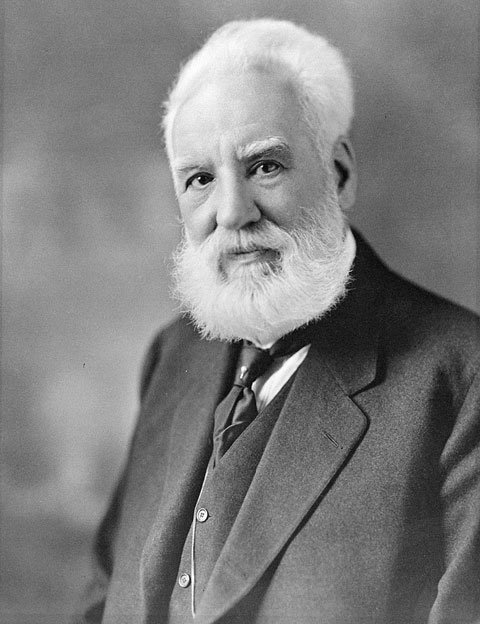
Alexander Graham Bell is usually closely association with the telephone, but during his life he had an interest in many other fields, such as aviation and medicine. This interest led to several impressive inventions; for example, he designed an early metal detector built that saved President James Garfield. He also built an artificial respirator that was a forerunner to the iron lung. Around the time that Bell was trying to save the president’s life, his wife was pregnant with their third child. Sadly, a couple of hours after Edward Bell was born on August 15, 1881, he passed away due to breathing problems. Spurred by his desire to prevent this from happening in the future, Bell built a primitive artificial respirator that he called a vacuum jacket.The jacket was essentially an iron cylinder that would be wrapped tight around the patient’s chest. An attendant would change the internal pressure of the cylinder with a hand pump—this compressed and released the patient’s chest and thus allowed the patient to breathe. In 1882, the inventor built a smaller version of the vacuum jacket that could be used on animals. He used it to revive a lamb. Although Bell spent the next few decades fine-tuning his creation, it was never used on a large scale. Nevertheless, the vacuum jacket did use the same basic principles that the later iron lung used.
